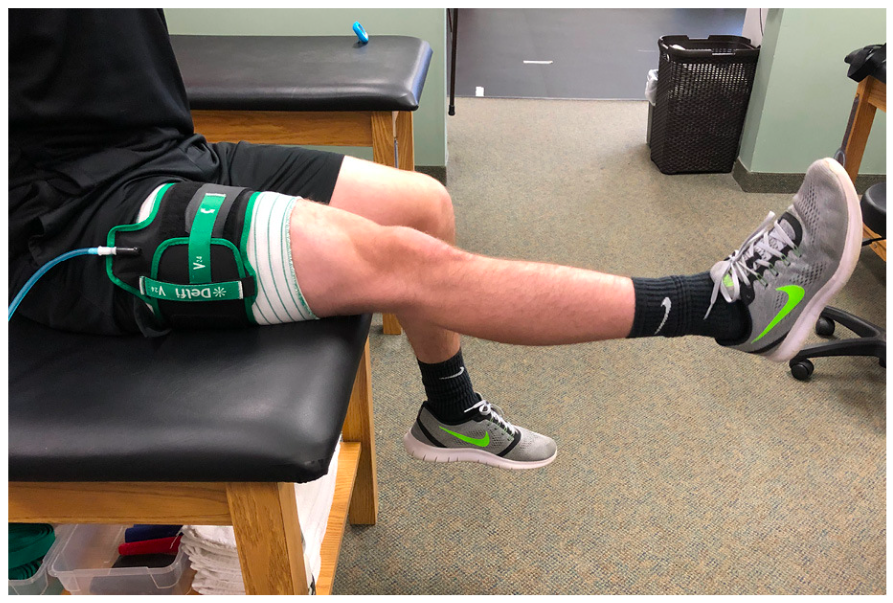- Sports Med U Newsletter
- Posts
- What is better treatment for FAI - Exercise or stretching?
What is better treatment for FAI - Exercise or stretching?
Sports Med U | Educating Minds, Elevating Potential
Physiotherapist-led treatment for femoroacetabular impingement syndrome (the PhysioFIRST study): a protocol for a participant and assessor- blinded randomised controlled trial
Kemp, J., Smith, A., Johnston, R., Coburn, S., Jones, D., Girdwood, M., Schache, A., Mentiplay, B., King, M., Scholes, M. and Silva, D.D.O., 2023. Physiotherapist-led treatment for Femoroacetabular Impingement Syndrome (The PhysioFIRST study): A participant and assessor-blinded randomised controlled trial. Journal of Science and Medicine in Sport, 26, pp.S135-S136.
In today’s letter
Overview of the effects of exercise VS stretching in femoro-acetabular impingement (FAI) in patient discomfort
Rapid Results = Similar effects on hip related quality of life questionnaire after 6 months of intervention
Professional takeaway = Providing individuals with FAI syndrome consistent supervised exercise, educating them on the advantages of physical activity, and instilling confidence in their ability to engage in exercise may be more crucial than the specific details of the exercise program offered
Bite-size study - Infographic style!

Whats new is SportsMed U
New article alert! 🚨 🎉
Blood flow restriction training how it works and how to use in with your patients 🔽🔽🔽
Deeper look
Aim of study
The main objective of this randomised controlled trial was to assess the impact of a physiotherapist-led sessions focused on targeted strengthening, as opposed to a physiotherapist-led sessions incorporating standardised stretching in 164 participants with FAI syndrome on hip-related QOL (International Hip Outcome Tool
Background info
Musculoskeletal conditions, like hip-related pain, are major contributors to pain and disability globally.
Femoroacetabular impingement (FAI) syndrome, a common cause of hip-related pain in adults, found in 49% of young and middle-aged people with such pain.
Diagnosis of FAI involves a triad of imaging findings, patient-reported symptoms, and clinical signs linked to excessive bone formation at the femoral head-neck junction.
Cam morphology, characterised by excessive bone formation at the femoral head-neck junction, is the most frequently reported altered bony shape in FAI syndrome.
Cam morphology may result in abnormal joint forces during specific movements, causing damage to the hip joint's articular cartilage.

Treatment options for FAI syndrome include surgical and non-surgical approaches.
Non-surgical methods are recommended as the initial choice for musculoskeletal pain conditions due to the higher costs and risks associated with surgery, as seen in clinical guidelines for conditions like osteoarthritis and low back pain.
Recent randomised controlled trials comparing hip arthroscopic surgery to physiotherapist-led interventions for FAI syndrome found small to moderate between-group differences favouring surgery, with increased costs and risks.
A consensus meeting suggested individualised, exercise-based interventions as the first-line treatment for young adults with hip-related pain, however did not have particular type of exercises specified.

Methods
Involves 164 participants with FAI
Two intervention groups, both receiving one-on-one treatment from a physiotherapist over a 6-month period.
Targeted strengthening group: Personalised exercise therapy and education program.
Standardised stretching group: Standardised stretching and personalised education program.
Primary outcomes measured using the International Hip Outcome Tool-33 and patient-perceived global improvement for changes in hip-related Quality of Life.
Secondary outcomes include assessing cost-effectiveness, muscle strength, range of motion, functional task performance, biomechanics, hip cartilage structure, and physical activity levels.
Inclusion criteria
(1) aged 18–50 years
(2) hip- related (anterior hip or groin) pain which is aggravated by prolonged sitting or hip movements into positions of impingement
(3) hip-related pain ≥3/10 on numerical pain scale for ≥6 weeks;
(4) cam morphology (defined as radiographic alpha angle ≥60°),21 as described below and
(5) a positive flexion-adduction-internal rotation test
Exclusion criteria
(1) Physiotherapy treatment for the hip in the past 3months
(2) Previous hip or back surgery
(3) Planned lower limb surgery in the following year
(4) Radiographic hip osteoarthritis (Kellgren and Lawrence score ≥2,23 representing moderate to severe hip osteoarthritis)
(5) Intra-articular hip–joint injection in the previous 3month
(6) Neurological, other MSK or systemic arthritis conditions including other significant musculoskeletal conditions where FAI syndrome was not considered to be the primary cause of hip pain
(7) Unable to perform testing procedures
(8) Unable to commit to a 6-month physiotherapy-led intervention or associated outcome assessments
(9) Contraindications to X-ray (including self-reported pregnancy and pregnancy during the study)
(10) Inability to understand English language

Results
There was no difference between groups for change in hip-related QOL patient-perceived global improvement at six months
Both groups reported improvement in the iHOT-33 from baseline to six months of 21.9 points
For the secondary outcomes, the STRENGTH group had greater improvements in hip abduction and hip adduction strength than the STRETCH group, but no between-group differences existed for functional task performance or kinesiophobia.

Discussion
The RCT revealed that there was no distinction in hip-related Quality of Life (QOL) or perceived improvement at six months between individuals with FAI syndrome who underwent a personalised, targeted strengthening program and those following a standardised stretching program.
Notably, both groups exhibited substantial improvements, surpassing the minimal clinically important change in hip-related QOL at the six-month mark
Clinical implications
The absence of meaningful differences between groups and significant improvements within each group in hip-related quality of life (QOL) imply that both stretching & strengthening could prove effective.
Providing individuals with FAI syndrome consistent supervised exercise, educating them on the advantages of physical activity, and instilling confidence in their ability to engage in exercise may be more crucial than the specific details of the exercise program offered
Thank you for reading this weeks edition!
Have a browse through our articles to sharpen you diagnostic skills


Reply